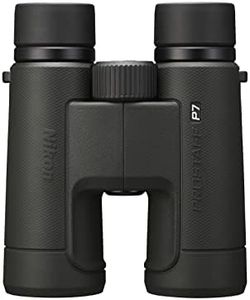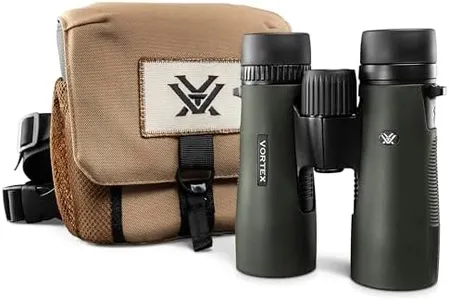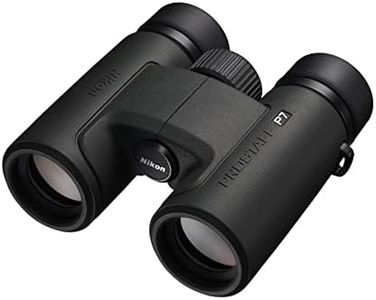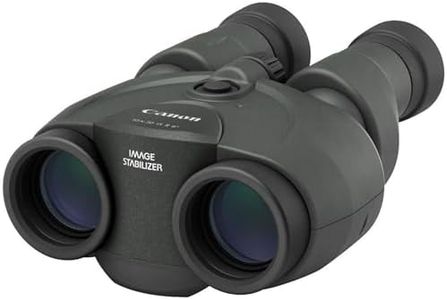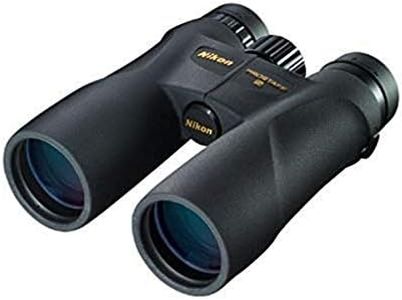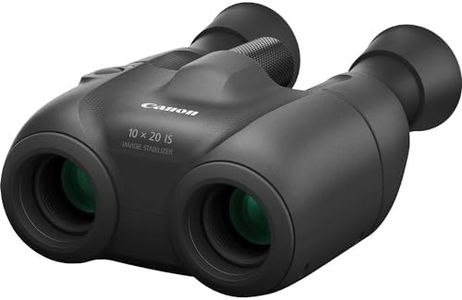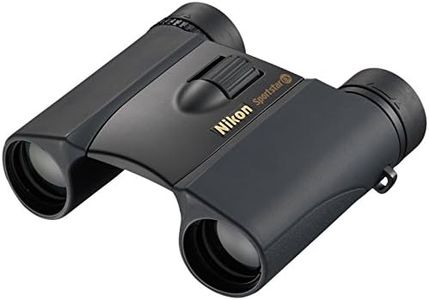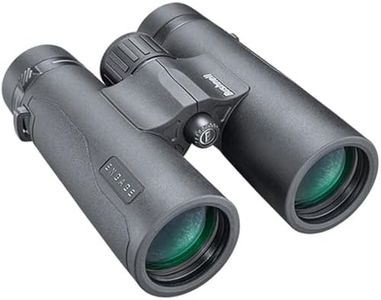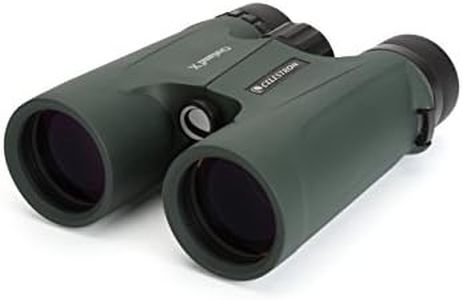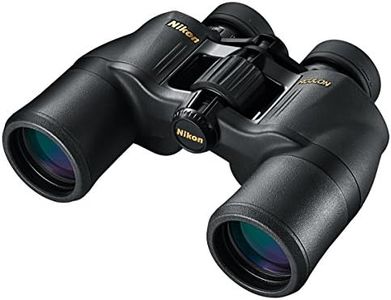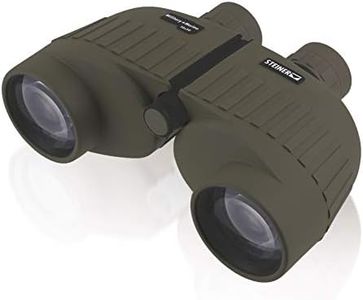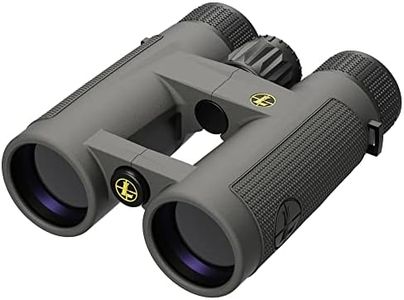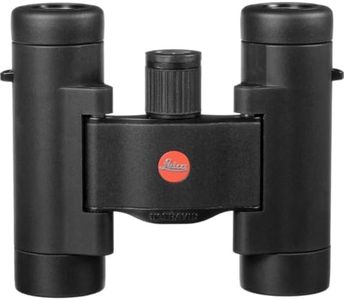We Use CookiesWe use cookies to enhance the security, performance,
functionality and for analytical and promotional activities. By continuing to browse this site you
are agreeing to our privacy policy
10 Best Lightweight Binoculars
From leading brands and best sellers available on the web.Buying Guide for the Best Lightweight Binoculars
Choosing the right pair of lightweight binoculars is all about finding the best balance of size, comfort, and viewing performance for your needs. These binoculars are designed to be portable and easy to carry during activities like hiking, birdwatching, sports events, or travel. Since there are many models with different capabilities and specifications, understanding the key features will help you pick a pair that matches how and where you plan to use them.MagnificationMagnification tells you how much closer an object will appear compared to viewing it with the naked eye. This is usually indicated by a number before an 'x', like 8x or 10x. Lower magnification, such as 8x, provides a wider field of view and is easier to keep steady, making it great for tracking moving things or scanning large areas. Higher magnification, like 10x or 12x, brings objects even closer but can be shakier to hold and shows less of the surrounding area. If you mainly want binoculars for casual use, nature walks, or sports, 8x is a good all-around choice. If your focus is on getting a closer look at distant birds or wildlife, go for 10x, but be aware they'll require a steadier hand.
Objective Lens DiameterThe objective lens diameter is the size (in millimeters) of the front lenses on the binoculars and is the second number often listed, such as 8x32 or 10x25. A bigger objective lens lets in more light, which means a brighter image, especially in lower light conditions like dawn or dusk. However, larger lenses also make the binoculars heavier. For truly lightweight options, look for objective lenses around 25mm to 32mm. If you want the brightest image possible and don't mind a bit more weight, you might prefer lenses around 32mm, but for maximum portability and daytime use, 25mm is a great pick.
WeightWeight is a critical factor in how comfortable binoculars are to carry for long periods. Lightweight binoculars typically weigh less than a pound (about 450g). The lighter they are, the easier they are to take on hikes or wear around your neck all day. However, very light models may sometimes feel less sturdy or have fewer premium features. If you plan to travel a lot or hike long distances, aim for the lowest weight that still offers the features you need. Those who use binoculars only occasionally or for short outings can consider slightly heavier options if they prefer more robust construction.
Field of ViewField of view describes how wide an area you can see through the binoculars at a certain distance. It's usually measured in feet at 1,000 yards or meters at 1,000 meters. A wider field of view helps you spot moving objects or scan landscapes more easily. Binoculars with lower magnification naturally offer a wider field of view, while higher magnification narrows it. If you enjoy watching sports, wildlife, or want to follow birds in flight, choose a pair with a wide field of view. If you're primarily interested in viewing stationary objects at a distance, this may be less of a priority.
Close Focus DistanceClose focus distance tells you how close you can be to an object and still see it clearly through the binoculars. This is important if you want to observe things like butterflies, insects, or flowers up close. Typical binoculars have a close focus of around 6-10 feet (2-3 meters), but some lightweight models can focus even closer. If close-up viewing is something you'll do often, look for models with the shortest close focus distance possible. If you'll rarely use binoculars for near objects, this spec is less critical.
Eye ReliefEye relief refers to the distance you can hold the binoculars from your eyes while still seeing the whole field of view, usually measured in millimeters. This is particularly important for people who wear glasses. Longer eye relief (15mm or more) means you can wear glasses comfortably while using binoculars. If you wear glasses all the time, make sure the binoculars offer sufficient eye relief; otherwise, you'll miss parts of the picture. If you don't wear glasses, you have more flexibility, but longer eye relief is still useful for overall comfort.
